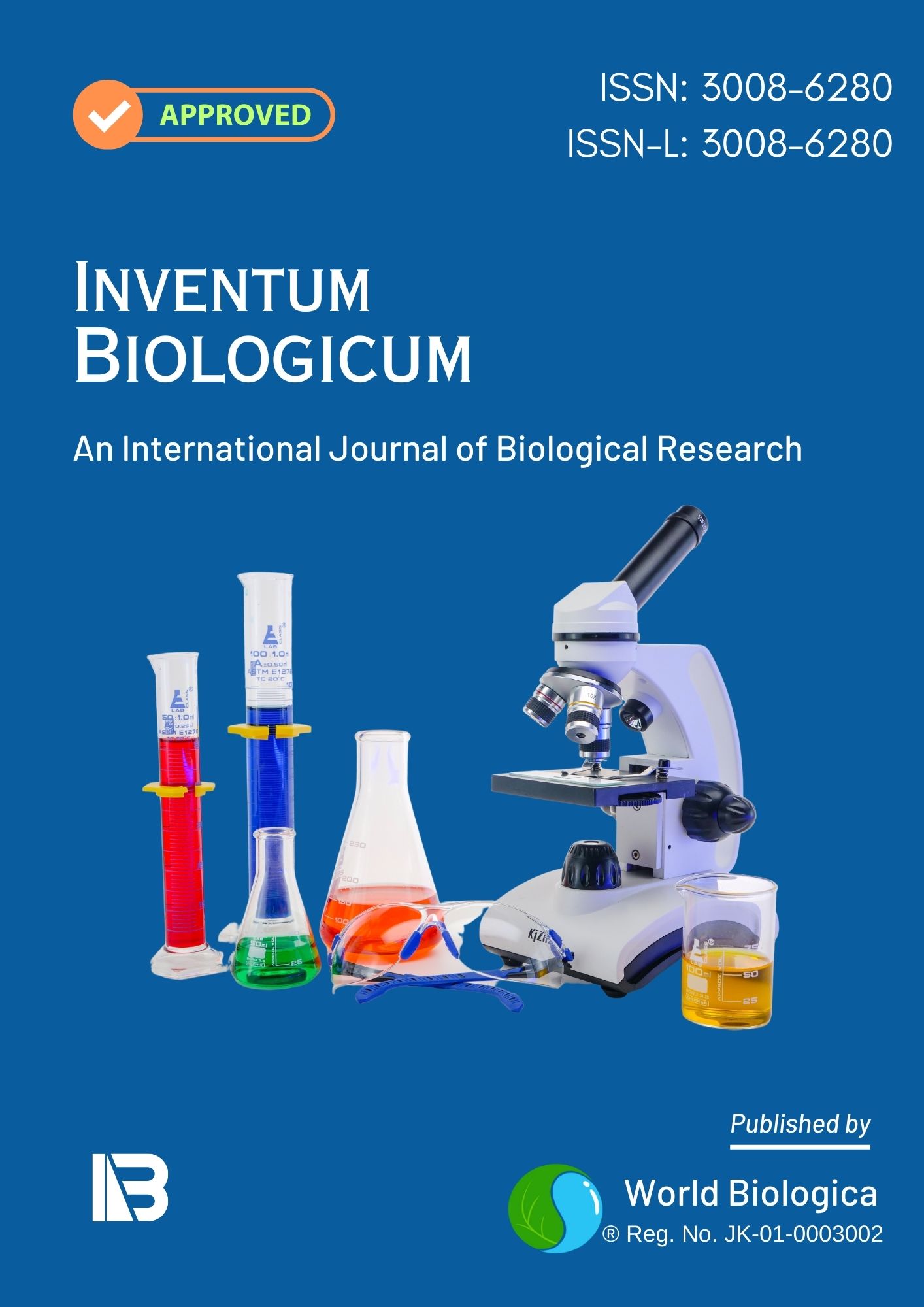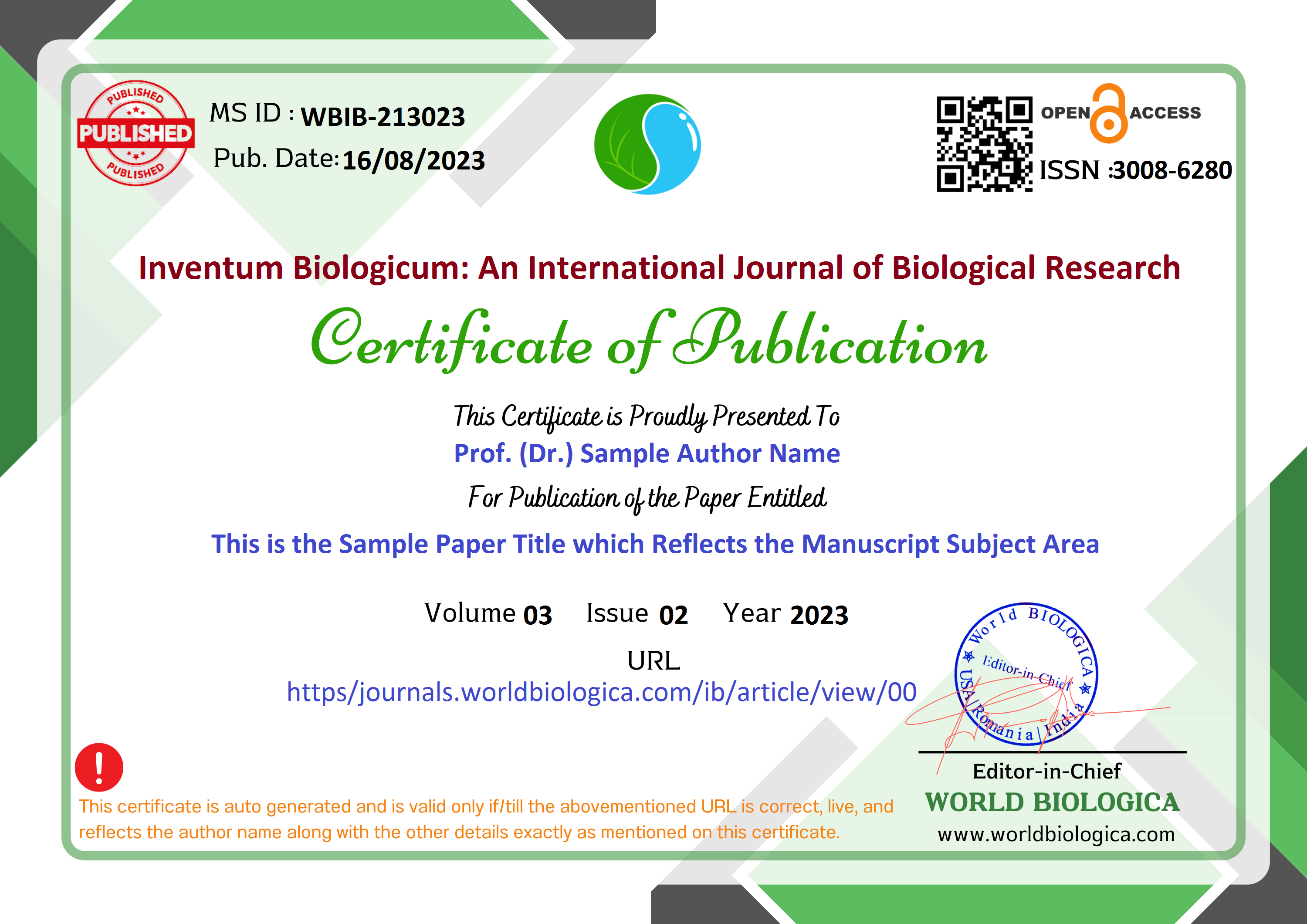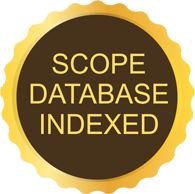Dynamics of Planktons and Fish Diversity
Keywords:
Planktons, Fish diversity, Primary productivity, Ecosystem, BioindicatorsAbstract
Plankton forms a vital factor of the aquatic environment and act as signs of fish variety, pollution levels and environmental disturbances. They shape an important natural fish food useful resource and play a essential role within the trophic shape of the atmosphere. Phytoplankton and zooplankton serve as bioindicators and are crucial components for the functioning of surroundings and guide a huge variety of surroundings offerings. Plankton usually had complicated interactions with ecological abiotic elements and versions in the distribution of plankton have an effect on the fish variety of the location. Maximum plankton abundance inside the wintry weather months also coincided with maximum fish range corroborating an existing superb courting among the plankton and fish.
The fish diversity and habitat are correlated with environmental variables affecting their distribution and populace dynamics. The endemic species had been observed to be declining because of habitat loss, degradation, alterations or changes. Migratory fishes were given disturbed by using the damming in river. Upstream web site had greater fish assemblage than downstream. The physico-chemical parameters of water performed vital position in numerous elements of fishes which include Juvenile levels of many fishes have been located an awful lot more in nicely oxygenated and clean water at the same time as it become being retarded by way of urbanization, over-exploitation and anthropogenic activities.
Downloads
References
Bicudo D.D.C., Fonseca B.M., Bini L.M., Crossetti L.O., Bicudo C.E.D.M. & Araujo-Jesus T. (2007) Undesirable side-effects of water hyacinth control in a shallow tropical reservoir. Freshwater Biology, 52, 1120–1133.
Acharjee, M.L., Barat S. (2013). Ichthyofaunal diversity of Teesta River in Darjeeling Himalaya of west bengal, India. Asian J. Exp. Biol. SCI. Vol 4 (1): 112-122.
Adams S.B., Warren M.L., Jr., Haag W.R. (2004). Spatial and temporal patterns in fish assemblages of upper coastal plain streams, Mississippi, USA. Hydrobilogia, Netherland 528: 45-61.
Agostinho A.A., Pelicice F.M., Gomes L.C. (2008). Dams and the fish fauna of the Neotropical region: impacts and management related to diversity and fisheries. Braz. J. Biol. 68(4): 1119-1132.
Bhatt, J.P., Manish K., Pandit M.K. (2012). Elevational gradients in fish diversity in the Himalaya: water discharge is the key driver of distribution patterns. PLOS ONE, www.plosone.org 11 September 2012, Volume 7, Issue 9, e46237.
Hossain M.S., Das N.G., Sarker S., Raha M.Z. (2012). Fish diversity and habitat relationship with environmental variables at Meghna River estuary, Bangladesh. Egyptian journal of aquatic research,38: 213-226.
Huang J., Huang L., Wu Z., Mo Y., Zou Q., Wu N., Chen Z. (2019). Correlation of fish assemblages with habitat and environmental variables in a headwater stream section of Lijiang river, China. Sustainability 11, 1135.
Li J., Huang. L, Zou L., Kano Y., Sato T., Yahara T. (2012). Spatial and temporal variation of fish assemblages and their associations to habitat variables in a mountain stream of north Tiaoxi river, China. Environ Biol Fish, 93:403–417 DOI 10.1007/s10641-011-9928-6.
Limbu J.H., Acharya G.S., Shrestha O.H. (2018). A brief report on ichthyofaunal diversity of Dewmai khola of Ilam district, Nepal. Journal of Natural Histtory Museum, Vol. 30.
Limbu J.H., Archana P., Baniya C.B. (2019). Spatio-temporal variation of fish assemblages in Ratuwa river, Ilam, Nepal. Journal of ecology and natural resources, ISSN: 2578-4994.
Adebayo, E. T. and Ayoade, A. A. 2019. Ecological assessment of Itapaji Reservoir status in Itapaji using plankton assemblage. Ethiopian, J. Environ. Stud. Manage., 1: 13-31.
Almeida, V. L. S., Melão, M. D. G. G. and Moura, A. N. (2012). Plankton diversity and limnological characterization in two shallow tropical urban reservoirs of Pernambuco State, Brazil. Anna. Brazilian Acad. Sci., 84: 537-550
Bajpai, O., Mishra, S., Mohan, N., Mohan, J. and Gupta, R. K. (2019). An annual algal diversity of Lakhna, Etawah, Uttar Pradesh, India. J. Appl. Natural Sci., 11: 619-623.
Bandelj, V., Socal, G., Park, Y. S., Lek, S. and Coppo, J. (2008). Analysis of multitrophic plankton assemblages in the Lagoon of Venice. Mar. Ecol. Prog. Ser., 368: 23-40.
Baruah, P. and Kakati, B. (2012). Water quality and phytoplankton diversity of Gopeswar temple freshwater pond in Assam (India). Bangladesh J. Bot., 41: 181-185.
Bhivgade, S. W., Taware, A. S., Salve, U. S. and Dhaware, A. S. 2010. Limnological studies on some aspects of Nagzari Tank, Ambajogai, District Beed, Maharashtra. J. Aqua. Biol., 25: 4-7
. Chambers, P. A., Brown, S., Culp, J. M., Lowell, R. B. and Pietroniro, A. (2000). Dissolved oxygen decline in ice-covered rivers of northern Alberta and its effects on aquatic biota. J. Aqua. Eco. Stress Recovery, 8(1): 27-38.
Chellappa, N. T., Fra, C. and Rocha, O. (2009). Phytoplankton community: indicator of water quality in the Armando Ribeiro Gonçalves reservoir and Pataxó channel, Rio Grande do Norte, Brazil. Brazilian J. Biol., 69: 241-251
Cloern, J. E., Foster, S. Q. and Kleckner, A. E. (2014). Phytoplankton primary production in the World’s estuarine-coastal ecosystems. Biogeosciences, 11: 2477-2501.
Dalu, T., Bere, T. and Froneman, P. W. (2016). Assessment of water quality based on diatom indices in a small temperate river system, Kowie River, South Africa. Water SA, 42(2): 183-193.
Das, D., Pathak, A. and Pal, S. (2018). Diversity of phytoplankton in some domestic wastewater-fed urban fed urban fish pond ecosystem of the Chota Nagpur Plateau in Bankura, India. Appl. Water Sci., 8: 84.
Dirisu, A. R., Uwagbae, M. A., Edwin-Wosu, N. L. and Imoobe, T. O. T. (2019). Plankton diversity and community structure of Asarama Estuary in the Niger delta in relation to physico-chemistry. Appl. Ecol. Environ. Res., 17: 10277-10292.
Etim, E. E., Odoh, R., Itodo, A. U., Umoh, S. D. and Lawal, U. (2013). Water quality index for the assessment of water quality from different sources in the Niger Delta Region of Nigeria. Front. Sci., 3(3): 89-95.
Figueredo, C. C. and Giani, A. (2001). Seasonal variation in the diversity and species richness of phytoplankton in a tropical eutrophic reservoir. Hydrobiologia, 445: 165-174.
Gogoi, P., Sinha, A., Sarkar, S. D., Chanu, T. N., Yadav, A. K., Koushlesh, S. K., Borah, S., Das, S. K. and Das, B. K. (2019). Seasonal influence of physicochemical parameters on phytoplankton diversity and assemblage pattern in Kailash Khal, a tropical wetland, Sundarbans, India. Appl. Water Sci., 9: 156.
Kumar, P., Mahajan, A. K. and Kumar, P. (2020). Determining limiting factors influencing fish kills at Rewalsar Lake: A case study with reference to Dal Lake (Mcleodganj), western Himalaya, India. Arab. J. Geosci., 13(17): 1-21.
Liu, C., Sun, X., Su, L., Cai, J., Zhang, L. and Liyun G. (2021). Assessment of phytoplankton community structure and water quality in the Hongmen Reservoir. Water Quality Res. J., 56(1): 19-30.
Downloads
-
Download PDF
 Abstract Views: 95,
Abstract Views: 95,  Download PDF: 71
Download PDF: 71
Published
How to Cite
Issue
Section
License
Copyright (c) 2025 Inventum Biologicum: An International Journal of Biological Research

This work is licensed under a Creative Commons Attribution-NonCommercial-NoDerivatives 4.0 International License.


















